



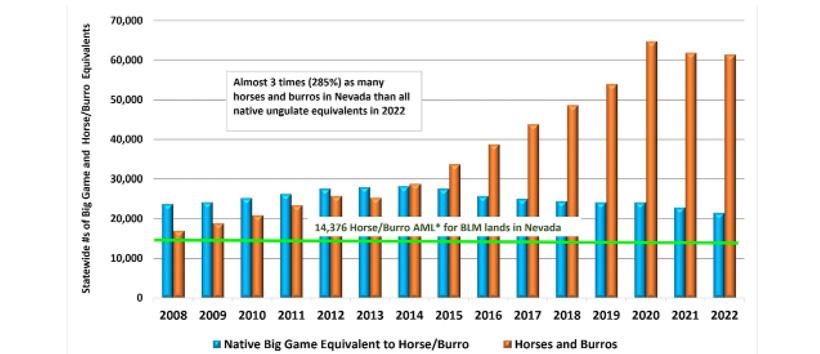
Source: Nevada Department of Wildlife
Item | Hunt/fish combo license* |
|---|---|
Resident cost | $75 |
Nonresident cost | $155 |
Item | Hunt license* |
Resident cost | $38 |
Nonresident cost | N/A |
Item | Hunt/fish youth combo license (12 to 17)* |
Resident cost | $15 |
Nonresident cost | $15 |
Item | Mule deer application fee (s) |
Resident cost | $14 |
Nonresident cost | $14 |
Item | Mule deer tag |
Resident cost | $30 |
Nonresident cost | $240 |
Item | Resident cost | Nonresident cost |
|---|---|---|
Hunt/fish combo license* | $75 | $155 |
Hunt license* | $38 | N/A |
Hunt/fish youth combo license (12 to 17)* | $15 | $15 |
Mule deer application fee (s) | $14 | $14 |
Mule deer tag | $30 | $240 |

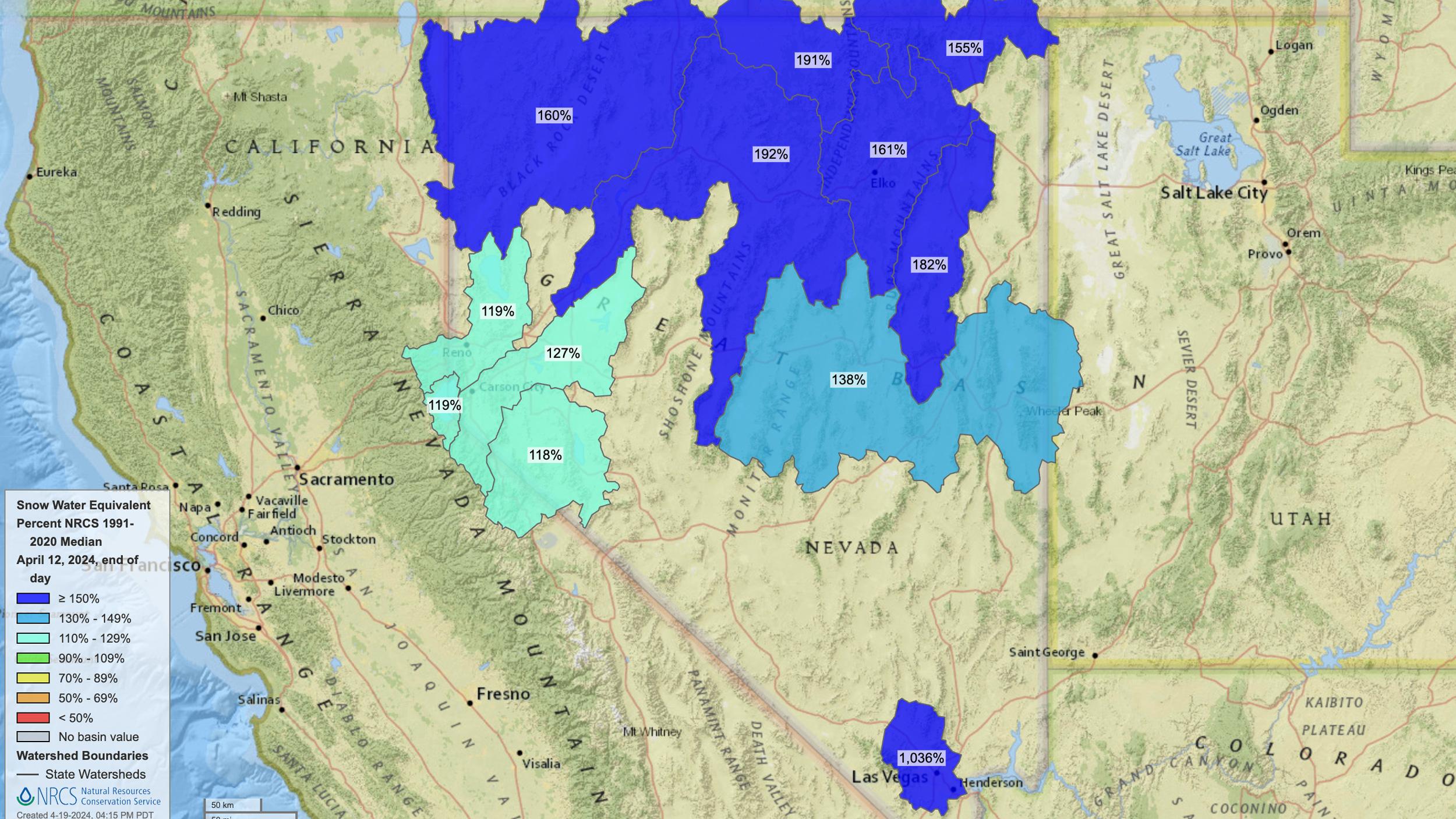
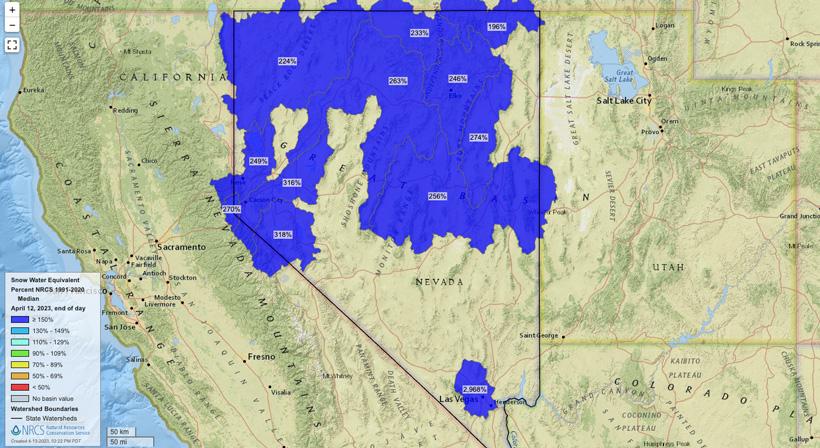
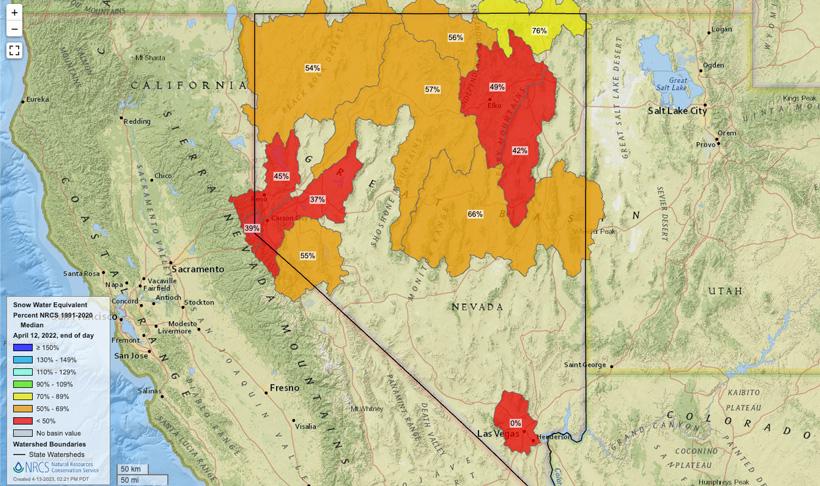

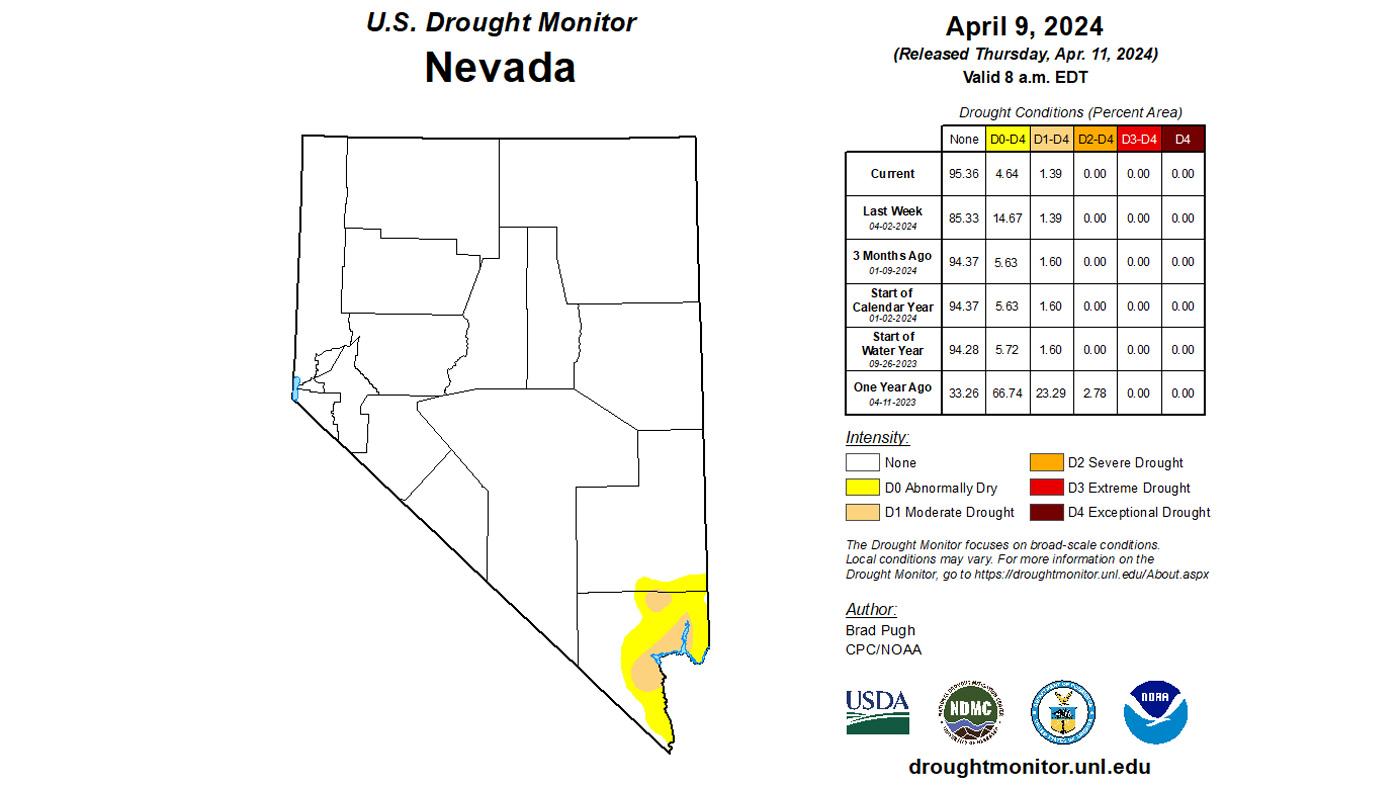
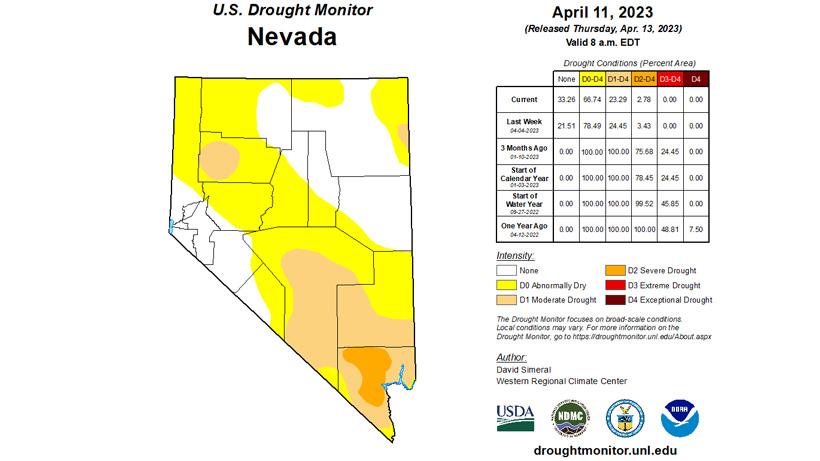
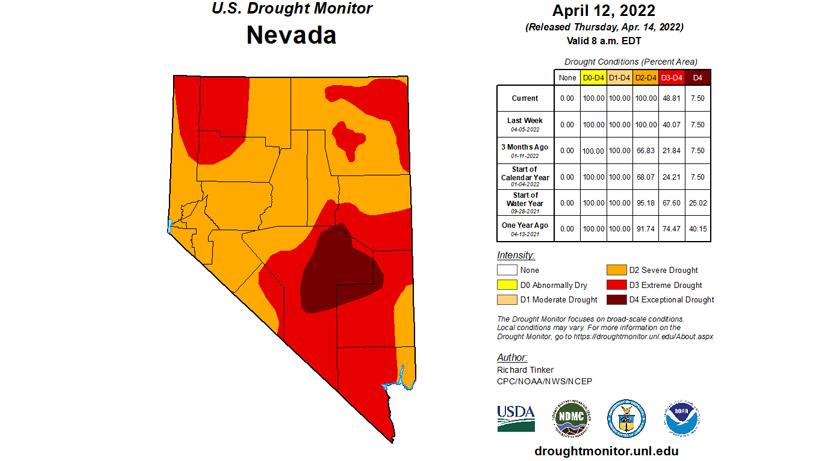
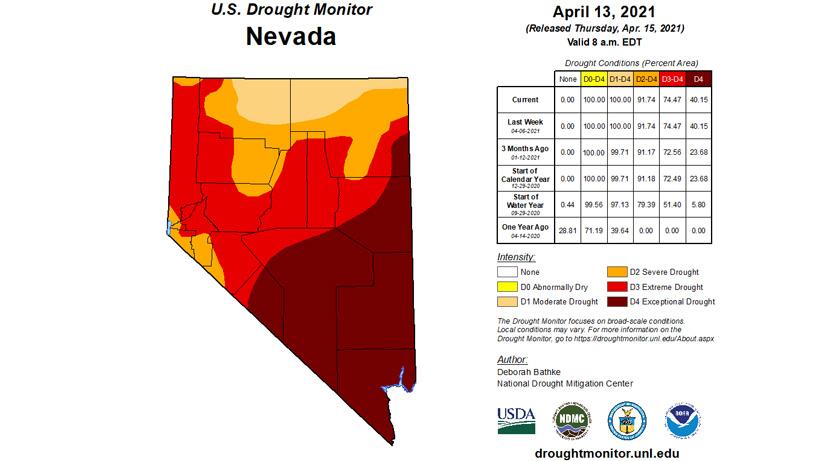
Unit Group | 011 - 013 |
|---|---|
Population estimate (2023) | 750 |
Population estimate (2022) | 900 |
Population estimate (2021) | 1,400 |
Population estimate (2020) | 1,200 |
Unit Group | 014 |
Population estimate (2023) | 290 |
Population estimate (2022) | 250 |
Population estimate (2021) | 500 |
Population estimate (2020) | 550 |
Unit Group | 015 |
Population estimate (2023) | 200 |
Population estimate (2022) | 190 |
Population estimate (2021) | 230 |
Population estimate (2020) | 230 |
Unit Group | 021 |
Population estimate (2023) | 380 |
Population estimate (2022) | 400 |
Population estimate (2021) | 500 |
Population estimate (2020) | 500 |
Unit Group | 022 |
Population estimate (2023) | 500 |
Population estimate (2022) | 500 |
Population estimate (2021) | 550 |
Population estimate (2020) | 550 |
Unit Group | 031 |
Population estimate (2023) | 1,700 |
Population estimate (2022) | 1,800 |
Population estimate (2021) | 2,000 |
Population estimate (2020) | 2,100 |
Unit Group | 032 |
Population estimate (2023) | 800 |
Population estimate (2022) | 850 |
Population estimate (2021) | 950 |
Population estimate (2020) | 1,100 |
Unit Group | 033 |
Population estimate (2023) | 300 |
Population estimate (2022) | 320 |
Population estimate (2021) | 400 |
Population estimate (2020) | 400 |
Unit Group | 034 |
Population estimate (2023) | 200 |
Population estimate (2022) | 210 |
Population estimate (2021) | 240 |
Population estimate (2020) | 290 |
Unit Group | 035 |
Population estimate (2023) | 600 |
Population estimate (2022) | 650 |
Population estimate (2021) | 750 |
Population estimate (2020) | 1,000 |
Unit Group | 041, 042 |
Population estimate (2023) | 600 |
Population estimate (2022) | 650 |
Population estimate (2021) | 700 |
Population estimate (2020) | 700 |
Unit Group | 043 - 046 |
Population estimate (2023) | 1,000 |
Population estimate (2022) | 1,500 |
Population estimate (2021) | 1,700 |
Population estimate (2020) | 1,800 |
Unit Group | 051 |
Population estimate (2023) | 1,900 |
Population estimate (2022) | 2,000 |
Population estimate (2021) | 2,100 |
Population estimate (2020) | 2,300 |
Unit Group | 061, 062, 064, 066 - 068 |
Population estimate (2023) | 7,900 |
Population estimate (2022) | 8,600 |
Population estimate (2021) | 7,300 |
Population estimate (2020) | 9,200 |
Unit Group | 065 |
Population estimate (2023) | 500 |
Population estimate (2022) | 650 |
Population estimate (2021) | 650 |
Population estimate (2020) | 800 |
Unit Group | 071 - 079, 091 |
Population estimate (2023) | 9,400 |
Population estimate (2022) | 11,000 |
Population estimate (2021) | 11,100 |
Population estimate (2020) | 11,400 |
Unit Group | 081 |
Population estimate (2023) | 700 |
Population estimate (2022) | 850 |
Population estimate (2021) | 900 |
Population estimate (2020) | 900 |
Unit Group | 101 - 108 |
Population estimate (2023) | 10,800 |
Population estimate (2022) | 13,500 |
Population estimate (2021) | 13,000 |
Population estimate (2020) | 14,000 |
Unit Group | 111-113 |
Population estimate (2023) | 2,600 |
Population estimate (2022) | 3,100 |
Population estimate (2021) | 3,600 |
Population estimate (2020) | 4,200 |
Unit Group | 114-115 |
Population estimate (2023) | 1,000 |
Population estimate (2022) | 1,000 |
Population estimate (2021) | 1,100 |
Population estimate (2020) | 1,200 |
Unit Group | 121 |
Population estimate (2023) | 1,600 |
Population estimate (2022) | 1,700 |
Population estimate (2021) | 2,100 |
Population estimate (2020) | 2,800 |
Unit Group | 131-134 |
Population estimate (2023) | 1,400 |
Population estimate (2022) | 2,200 |
Population estimate (2021) | 4,300 |
Population estimate (2020) | 4,900 |
Unit Group | 141-145 |
Population estimate (2023) | 3,600 |
Population estimate (2022) | 4,400 |
Population estimate (2021) | 3,900 |
Population estimate (2020) | 4,200 |
Unit Group | 151, 152,154, 155 |
Population estimate (2023) | 2,500 |
Population estimate (2022) | 2,500 |
Population estimate (2021) | 2,000 |
Population estimate (2020) | 2,000 |
Unit Group | 161 -164 |
Population estimate (2023) | 3,600 |
Population estimate (2022) | 2,100 |
Population estimate (2021) | 3,600 |
Population estimate (2020) | 4,000 |
Unit Group | 171 - 173 |
Population estimate (2023) | 2,500 |
Population estimate (2022) | 3,100 |
Population estimate (2021) | 3,400 |
Population estimate (2020) | 3,700 |
Unit Group | 181 - 184 |
Population estimate (2023) | 1,500 |
Population estimate (2022) | 1,200 |
Population estimate (2021) | 1,250 |
Population estimate (2020) | 1,300 |
Unit Group | 192 |
Population estimate (2023) | 500 |
Population estimate (2022) | 520 |
Population estimate (2021) | 540 |
Population estimate (2020) | 500 |
Unit Group | 194, 196 |
Population estimate (2023) | 750 |
Population estimate (2022) | 750 |
Population estimate (2021) | 875 |
Population estimate (2020) | 1,000 |
Unit Group | 195 |
Population estimate (2023) | 250 |
Population estimate (2022) | 500 |
Population estimate (2021) | 500 |
Population estimate (2020) | 500 |
Unit Group | 201, 204 |
Population estimate (2023) | 550 |
Population estimate (2022) | 500 |
Population estimate (2021) | 570 |
Population estimate (2020) | 550 |
Unit Group | 202, 205 - 208 |
Population estimate (2023) | 280 |
Population estimate (2022) | 380 |
Population estimate (2021) | 380 |
Population estimate (2020) | 450 |
Unit Group | 203 |
Population estimate (2023) | 500 |
Population estimate (2022) | 600 |
Population estimate (2021) | 600 |
Population estimate (2020) | 500 |
Unit Group | 211, 213 |
Population estimate (2023) | 340 |
Population estimate (2022) | 400 |
Population estimate (2021) | 400 |
Population estimate (2020) | 400 |
Unit Group | 221- 223 |
Population estimate (2023) | 2,200 |
Population estimate (2022) | 3,000 |
Population estimate (2021) | 3,800 |
Population estimate (2020) | 4,200 |
Unit Group | 231 |
Population estimate (2023) | 2,100 |
Population estimate (2022) | 2,500 |
Population estimate (2021) | 3,300 |
Population estimate (2020) | 3,600 |
Unit Group | 241 - 245 |
Population estimate (2023) | 1,000 |
Population estimate (2022) | 1,200 |
Population estimate (2021) | 1,300 |
Population estimate (2020) | 1,200 |
Unit Group | 251 - 254 |
Population estimate (2023) | 340 |
Population estimate (2022) | 400 |
Population estimate (2021) | 400 |
Population estimate (2020) | 400 |
Unit Group | 261 - 268 |
Population estimate (2023) | 450 |
Population estimate (2022) | 500 |
Population estimate (2021) | 500 |
Population estimate (2020) | 500 |
Unit Group | 271, 272 |
Population estimate (2023) | 225 |
Population estimate (2022) | 240 |
Population estimate (2021) | 240 |
Population estimate (2020) | 240 |
Unit Group | 291 |
Population estimate (2023) | 850 |
Population estimate (2022) | 600 |
Population estimate (2021) | 600 |
Population estimate (2020) | 600 |
Unit Group | Total |
Population estimate (2023) | 68,000 |
Population estimate (2022) | 78,000 |
Population estimate (2021) | 84,000 |
Population estimate (2020) | 92,000 |
Unit Group | Population estimate (2023) | Population estimate (2022) | Population estimate (2021) | Population estimate (2020) |
|---|---|---|---|---|
011 - 013 | 750 | 900 | 1,400 | 1,200 |
014 | 290 | 250 | 500 | 550 |
015 | 200 | 190 | 230 | 230 |
021 | 380 | 400 | 500 | 500 |
022 | 500 | 500 | 550 | 550 |
031 | 1,700 | 1,800 | 2,000 | 2,100 |
032 | 800 | 850 | 950 | 1,100 |
033 | 300 | 320 | 400 | 400 |
034 | 200 | 210 | 240 | 290 |
035 | 600 | 650 | 750 | 1,000 |
041, 042 | 600 | 650 | 700 | 700 |
043 - 046 | 1,000 | 1,500 | 1,700 | 1,800 |
051 | 1,900 | 2,000 | 2,100 | 2,300 |
061, 062, 064, 066 - 068 | 7,900 | 8,600 | 7,300 | 9,200 |
065 | 500 | 650 | 650 | 800 |
071 - 079, 091 | 9,400 | 11,000 | 11,100 | 11,400 |
081 | 700 | 850 | 900 | 900 |
101 - 108 | 10,800 | 13,500 | 13,000 | 14,000 |
111-113 | 2,600 | 3,100 | 3,600 | 4,200 |
114-115 | 1,000 | 1,000 | 1,100 | 1,200 |
121 | 1,600 | 1,700 | 2,100 | 2,800 |
131-134 | 1,400 | 2,200 | 4,300 | 4,900 |
141-145 | 3,600 | 4,400 | 3,900 | 4,200 |
151, 152,154, 155 | 2,500 | 2,500 | 2,000 | 2,000 |
161 -164 | 3,600 | 2,100 | 3,600 | 4,000 |
171 - 173 | 2,500 | 3,100 | 3,400 | 3,700 |
181 - 184 | 1,500 | 1,200 | 1,250 | 1,300 |
192 | 500 | 520 | 540 | 500 |
194, 196 | 750 | 750 | 875 | 1,000 |
195 | 250 | 500 | 500 | 500 |
201, 204 | 550 | 500 | 570 | 550 |
202, 205 - 208 | 280 | 380 | 380 | 450 |
203 | 500 | 600 | 600 | 500 |
211, 213 | 340 | 400 | 400 | 400 |
221- 223 | 2,200 | 3,000 | 3,800 | 4,200 |
231 | 2,100 | 2,500 | 3,300 | 3,600 |
241 - 245 | 1,000 | 1,200 | 1,300 | 1,200 |
251 - 254 | 340 | 400 | 400 | 400 |
261 - 268 | 450 | 500 | 500 | 500 |
271, 272 | 225 | 240 | 240 | 240 |
291 | 850 | 600 | 600 | 600 |
Total | 68,000 | 78,000 | 84,000 | 92,000 |
Unit group |
Trophy potential |
Buck:doe ratio |
Harvest success |
Percentage bucks 4 point or better |
065 |
180”+ |
35:100 |
Archery: 20% |
43% |
071 |
180”+ |
23:100 |
Archery: 30% |
38% |
072 |
180”+ |
23:100 |
Archery: 30% |
38% |
075 |
180”+ |
23:100 |
Archery: 30% |
38% |
077 |
180”+ |
23:100 |
Archery: 30% |
38% |
081 |
180”+ |
27:100 |
Archery: 50% |
63% |
115 |
180”+ |
52:100 |
Archery: 20% |
57% |
131 |
190”+ |
26:100 |
Archery: 50% |
57% |
132 |
190”+ |
20:100 |
Archery: 50% |
57% |
134 |
180”+ |
20:100 |
Archery: 50% |
57% |
161 |
180”+ |
32:100 |
Archery: 15% |
40% |
162 |
180”+ |
32:100 |
Archery: 15% |
40% |
192 |
180”+ |
17:100 |
Archery: 18% |
40% |
194 |
190”+ |
24:100 |
Archery: 100% |
63% |
196 |
180”+ |
24:100 |
Archery: 100% |
63% |
221 |
180”+ |
30:100 |
Archery: 24% |
44% |
222 |
180”+ |
30:100 |
Archery: 24% |
44% |
231 |
190”+ |
25:100 |
Archery: 30% |
58% |
241 |
190”+ |
24:100 |
Archery: 67% |
86% |
242 |
190”+ |
24:100 |
Archery: 67% |
86% |
Unit group | Trophy potential | Buck:doe ratio | Harvest success | Percentage bucks 4 point or better |
065 | 180”+ | 35:100 | Archery: 20% | 43% |
071 | 180”+ | 23:100 | Archery: 30% | 38% |
072 | 180”+ | 23:100 | Archery: 30% | 38% |
075 | 180”+ | 23:100 | Archery: 30% | 38% |
077 | 180”+ | 23:100 | Archery: 30% | 38% |
081 | 180”+ | 27:100 | Archery: 50% | 63% |
115 | 180”+ | 52:100 | Archery: 20% | 57% |
131 | 190”+ | 26:100 | Archery: 50% | 57% |
132 | 190”+ | 20:100 | Archery: 50% | 57% |
134 | 180”+ | 20:100 | Archery: 50% | 57% |
161 | 180”+ | 32:100 | Archery: 15% | 40% |
162 | 180”+ | 32:100 | Archery: 15% | 40% |
192 | 180”+ | 17:100 | Archery: 18% | 40% |
194 | 190”+ | 24:100 | Archery: 100% | 63% |
196 | 180”+ | 24:100 | Archery: 100% | 63% |
221 | 180”+ | 30:100 | Archery: 24% | 44% |
222 | 180”+ | 30:100 | Archery: 24% | 44% |
231 | 190”+ | 25:100 | Archery: 30% | 58% |
241 | 190”+ | 24:100 | Archery: 67% | 86% |
242 | 190”+ | 24:100 | Archery: 67% | 86% |
Unit group |
Weapon |
Trophy potential |
Harvest success |
Nonresident odds with 0 points |
032 |
Archery |
160"+ |
23% |
4.0% |
041, 042 |
Archery |
170"+ |
25% |
3.5% |
045 |
Archery |
160”+ |
21% |
3.2% |
101, 102, 103, 104, 105, 106, 107, 108, 109 |
Archery |
150”-170”+ |
17% |
2.1% |
171, 172, 173 |
Archery |
150”-170”+ |
11% |
4.7% |
035 |
Muzzleloader |
160"+ |
33% |
2.0% |
101, 102, 103, 104, 105, 106, 107, 108, 109 |
Muzzleloader |
150”-170”+ |
27% |
2.7% |
Unit group | Weapon | Trophy potential | Harvest success | Nonresident odds with 0 points |
032 | Archery | 160"+ | 23% | 4.0% |
041, 042 | Archery | 170"+ | 25% | 3.5% |
045 | Archery | 160”+ | 21% | 3.2% |
101, 102, 103, 104, 105, 106, 107, 108, 109 | Archery | 150”-170”+ | 17% | 2.1% |
171, 172, 173 | Archery | 150”-170”+ | 11% | 4.7% |
035 | Muzzleloader | 160"+ | 33% | 2.0% |
101, 102, 103, 104, 105, 106, 107, 108, 109 | Muzzleloader | 150”-170”+ | 27% | 2.7% |
Season |
Number of hunts |
Archery |
24 |
Late Archery |
0 |
Muzzleloader |
13 |
Late Muzzleloader |
0 |
Rifle |
0 |
Early Rifle |
4 |
Mid Rifle |
1 |
Late Rifle |
0 |
Season | Number of hunts |
Archery | 24 |
Late Archery | 0 |
Muzzleloader | 13 |
Late Muzzleloader | 0 |
Rifle | 0 |
Early Rifle | 4 |
Mid Rifle | 1 |
Late Rifle | 0 |
Unit group |
Weapon |
Trophy potential |
Harvest success |
Nonresident odds with 5 points |
032 |
Archery |
160”+ |
23% |
>50%* |
171, 172, 173 |
Archery |
150”-170”+ |
11% |
72% |
101, 102, 103, 104, 105, 106, 107, 108, 109 |
Muzzleloader |
150”-170”+ |
27% |
51% |
Unit group | Weapon | Trophy potential | Harvest success | Nonresident odds with 5 points |
032 | Archery | 160”+ | 23% | >50%* |
171, 172, 173 | Archery | 150”-170”+ | 11% | 72% |
101, 102, 103, 104, 105, 106, 107, 108, 109 | Muzzleloader | 150”-170”+ | 27% | 51% |
Season |
Number of hunts |
Archery |
38 |
Late Archery |
9 |
Muzzleloader |
26 |
Late Muzzleloader |
3 |
Rifle |
16 |
Early Rifle |
11 |
Mid Rifle |
2 |
Late Rifle |
3 |
Season | Number of hunts |
Archery | 38 |
Late Archery | 9 |
Muzzleloader | 26 |
Late Muzzleloader | 3 |
Rifle | 16 |
Early Rifle | 11 |
Mid Rifle | 2 |
Late Rifle | 3 |
Season |
Number of hunts |
Archery |
26 |
Late Archery |
1 |
Muzzleloader |
15 |
Late Muzzleloader |
0 |
Rifle |
2 |
Early Rifle |
6 |
Mid Rifle |
2 |
Late Rifle |
0 |
Season | Number of hunts |
Archery | 26 |
Late Archery | 1 |
Muzzleloader | 15 |
Late Muzzleloader | 0 |
Rifle | 2 |
Early Rifle | 6 |
Mid Rifle | 2 |
Late Rifle | 0 |
Season |
Number of hunts |
Archery |
14 |
Late Archery |
0 |
Muzzleloader |
6 |
Late Muzzleloader |
0 |
Rifle |
1 |
Early Rifle |
3 |
Mid Rifle |
1 |
Late Rifle |
0 |
Season | Number of hunts |
Archery | 14 |
Late Archery | 0 |
Muzzleloader | 6 |
Late Muzzleloader | 0 |
Rifle | 1 |
Early Rifle | 3 |
Mid Rifle | 1 |
Late Rifle | 0 |
Note: The application deadline for all Nevada species is May 7, 2025, by 11:00 p.m. PT. You can apply online here.
Once again, I'm going to place this at the top of this article because I want people to see it. If you remember, back in 2016, I did an article titled "The colossal backlash of feral horses on wildlife." That article looked at the population of feral horses across a variety of western states, especially in Nevada. I’m already working on a round two article around that subject, so stay tuned for that. But I wanted to present some new information I found when working on that article ahead of time.
Nevada’s mule deer populations have continued to decline over the past decade largely due to a lack of consistent precipitation, large-scale range fires, conversion of native shrubs to invasive grasses, and degraded range conditions from feral horses and burros. During 2021, NDOW formed a Mule Deer Enhancement Program (MDEP) to address declining herds throughout the state. The MDEP is a committee and stakeholder-based program led by teams of biologists from the NDOW and includes partners from state and local agencies and non-governmental organizations (NGOs). As of this report, there have been over 17 new habitat projects approved by the MDEP Oversight Committee for 2022 and 5 new radio-collar projects to investigate limiting factors for mule deer. The MDEP program will continue to identify projects and funding designed to improve habitat and gain a better understanding of mule deer ecology, including predator-prey dynamics, impacts from competition with feral equids, and migration corridors.
The figure below compares the number of all Nevada’s native big game animal equivalents to horses and burros, 2008-2022. It’s very alarming!
Figure 1. Statewide comparison 2008-2022 of the estimated number of free-roaming horses and burros to the biomass equivalent of all native big game animals in Nevada. Feral equids are disproportionately larger than Nevada’s native ungulates (elk, mule deer, bighorn sheep, and pronghorn antelope) because they never evolved in synchronicity with Nevada ecosystems that exist today. The graph uses the best available values and rates of body weight, forage consumption, and water intake among the 2 groups to compare “apples to apples” of the forage and water use of the equivalent number of native ungulates to that of a horse/burro. The green horizontal line is the BLM’s statewide Appropriate Management Level (AML) if horses and burros were managed in a “thriving natural ecological balance with the habitat” as required by The Wild Free-Roaming Horses and Burros Act of 1971 (Public Law 92-195).
To aid in your research and planning efforts, we created a brand new tool for Insiders called Hunt Planner. This tool will help you be more efficient at planning for hunts and also keeps all your research data organized. No more notepads getting lost or headaches when trying to remember what units caught your eye during your research! Everything you need is always in one place at GOHUNT.
What can you do in Hunt Planner?
Point Tracker allows you to enter the number of points you have for each state and species and, as you research through Filtering and Draw Odds, your point total will automatically be highlighted.
To view important information and an overview of Nevada’s rules/regulations, the draw system and bonus points, tag and license fees, and an interactive boundary line map, check out our State Profile. You can also view the Species Details pages to access historical and statistical data to help you find trophy units.
*Applicants who want to build bonus points if they are unsuccessful in the draw will need to purchase a hunting license or hunt/fish combo license. If they do not, they will not be given a bonus point. Tag fees will only be charged if you are successful in the draw. You do not have to front tag fees when you apply.
There are also three other chances to draw a Nevada tag. Get a full breakdown of Nevada's Partnership in Wildlife, Silver State, and Nevada Dream Tags at the link below:
Partnership in Wildlife tags (PIW) offer the ability to hunt in any open unit in the state, although the season dates and weapon class for each hunt unit apply.
Basically, this is a statewide hunting tag for that species, but you must follow the season dates and legal weapon for that season.
Applications are $10 per species. Apply in Nevada's main draw.
For an additional $20, you can select to be included in the Silver State Tag drawings, which would make you eligible for the one permit per species drawing each year that allows the recipient the opportunity to hunt any public land across the state —just like the governor’s tag. The Silver State elk tag application fee is $20 and it's $20 for antelope.
Apply in Nevada's main draw.
Nevada Dream Tags are another shot at drawing the hunt of a lifetime for mule deer, antelope, desert bighorn sheep, and elk in Nevada. Dream Tags are similar to SuperTags and Super Raffles in other Western states. This drawing is open to both residents and nonresidents. You can buy an unlimited number of raffle tickets for $5 each, plus a $0.75 processing fee, for as many species as you want. You can enter the Dream Tag raffle here.
It shouldn’t come as a surprise, but Nevada is the driest state in the nation at an average of fewer than 10 inches per year (and the only state to average less than 10 inches of rain per year). The national average for rainfall is roughly 30 inches.
In Nevada in 2023 and 2024, the state saw an influx of winter/spring precipitation that had a chance to greatly help out the native wildlife and mule deer in particular.
On April 12, 2025, the state was tracking reasonably well with the exception of the extreme southern corner of Nevada. As of April 20, the central part of the state is currently showing 62% of snow water equivalent percent of normal.
Nevada snow water equivalent update from April 12, 2025. Source: National Resources Conservation Service
Nevada snow water equivalent update from April 12, 2024. Source: National Resources Conservation Service
Nevada snow water equivalent update from April 12, 2023. Source: National Resources Conservation Service
Nevada snow water equivalent update from April 12, 2022. Source: National Resources Conservation Service
Nevada drought monitor status map from April 8, 2025. Source: United States Drought Monitor
Nevada drought monitor status map from April 9, 2024. Source: United States Drought Monitor
Nevada drought monitor status map from April 11, 2023. Source: United States Drought Monitor
Nevada drought monitor status map from April 11, 2022. Source: United States Drought Monitor
Nevada drought monitor status map from April 13, 2021. Source: United States Drought Monitor
For all species, Nevada has a random draw, weighted bonus point system. Every applicant who applies has a chance to draw; however, bonus points increase your chances over time of being successful. Nevada tag quota is approximately a 90/10 split for residents and nonresidents.
Nevada has a bonus point system where applicants will receive one bonus point for each year they apply and are unsuccessful in the draw. You must opt-in and purchase a hunting license when you apply if you wish to receive a bonus point after the draw. Applicants who do not opt-in and buy the hunting license will not receive a bonus point.
In Nevada, bonus points are species-specific. For example, you cannot apply bonus points you have accrued for mule deer towards an antelope or elk application. Applicants can apply for bonus points only if they do not want to select hunts. In my opinion, I feel it’s best to always apply for hunts and not points only, as you never know when you might get lucky and draw. Remember that the draw is a bonus point system, and odds are low, and you will receive a point if you are unsuccessful in the draw.
The only reason not to apply for hunts is if you cannot afford the cost of the tag should you draw it or the time off of work.
All applications, regardless of species or class, are assigned a random number. Applications with bonus points are assigned additional random numbers by squaring the bonus point total and adding one for the current year (however, only the lowest number within the bonus point application is used).
Bonus point example
Let’s say you have six bonus points for antlered mule deer, you square six to get 36, and add one (applicant with zero bonus points is assigned one random number) for a total of 37 random numbers, with the lowest being the draw number assigned to the mule deer application.
Again, if you draw a tag or if you fail to apply for two consecutive years, the bonus points will be purged.
Applications are drawn in sequential order starting with the lowest random number and then evaluated within the following group order.
The draw order allows applicants to apply for all species and sex that they wish to hunt without the issue of drawing a lower-tiered tag. Applicants are only allowed to draw a single tag for each species.
In Nevada, you can apply for up to five choices when you apply. When an application is considered in the draw, NDOW will attempt to allocate the first choice. If all permits are gone for that hunt, they will attempt to allocate the second choice. If all tags are gone for your second choice, they will attempt to award you a tag for your third choice. They continue through all five hunt choices before moving to the next applicant. Thus, applicants could draw any of their five hunt choices.
IMPORTANT: Due to this process, applicants should include hunts for all five choices to increase their chances of drawing a tag. Also, applicants should stagger their hunt choices from what you consider to be the best hunt (worst odds) to a decent hunt (better odds). If you were to apply inversely (best odds to worst odds), you are essentially wasting your latter hunt choices. This is a strategy, that I personally feel will benefit you on your applications in Nevada across the board.
Nevada allows hunters to apply on a group application for deer, antlerless elk and antelope (horns shorter than ears). Residents and nonresidents can apply together on a group application. Doing so does not increase odds for a nonresident; the nonresident tags will still come from the nonresident quota. Applying as a group does have the potential to negatively impact odds slightly as Nevada will not over-allocate tags to cover a group application if there are not enough tags to satisfy the size of the group. Bonus points for a group application are averaged and rounded to the nearest whole number. For example, if a group of three applicants apply with seven, five and 13 bonus points, the application will go into the draw with eight bonus points.
The math looks like this: 7+5+13 = 25/3 (group size) = 8.3333 rounded to 8.
8 squared is 64 + 1 (this year’s application) = 65 random numbers generated for the group application in the draw. If the application is successful, all members of the group will receive a tag.
If a group application has been drawn and the group wants to return their tags to have bonus points reinstated, every member of the group must return their tag.
Any remaining tags remaining after the main draw will become available in a second drawing to both residents and nonresidents. If you apply and draw a tag in the second drawing, your bonus points will be purged. Online applications for the second draw are due by June 16, 2025, at 11 p.m. PT, and results should be made available on or before June 27, 2025.
If you want to see what tags were available for the 2024 Secondary Draw, check out this article.
Within seven days of the results of the draw, applicants who successfully drew a tag can choose to electronically return their tag. Hunters who drew a deer tag can turn them back in up to one day prior to the start of the season. In this case, they will retain their bonus points and gain one for this year’s application.
Any leftover tags or tags that have been returned and were not claimed by an alternate will be listed and sold on a first-come, first-served basis on the NDOW licensing system site. The first come, first served program generally opens in early July. Bonus points will be purged if you purchase a leftover or returned tag through this process.
Remember: New for 2023, in order to purchase a resident returned tag, you must be a resident of Nevada. A nonresident of Nevada can only purchase a tag that was originally drawn and returned by a nonresident.
Applicants who drew a tag can return their tags up until one day prior to their hunt starting. If the tag is not accepted by an alternate, it will be listed randomly on the first come, first served list and during the First-Come, First-Served application period, it could then be added to your cart and purchased when it shows up.
Note: we will have an updated Nevada First-Come, First-Served article later this summer when that tag system opens.
When people hear the words “Nevada mule deer,” their minds instantly might drift toward giant bucks and horrible draw odds. Both those statements are mostly true. It is the reason that Nevada should be considered a medium to long-term strategy when it comes to drawing a mule deer tag. Plan on investing both time and money if you want to get into the mule deer game of this state. While luck doesn’t hurt, most likely, you’ll be waiting a long time to draw a coveted deer tag. If you’re a resident, you have a few more options, and draw odds are in your favor, but it will still be a long wait for some of the coveted units of the state.
Nevada has a great season structure with a variety of options to consider for mule deer.
Archery
The early archery hunt opens August 10 through September 9. The bowhunt can be a great time to hunt when bucks are in bachelor herds and more easily spotted with their red summer coats. Depending on the area, focusing your efforts on or around water can be effective.
Nevada also offers late-season rut archery hunts in several units (season dates vary in terms of the unit). Odds of drawing these hunts are much lower than most of the early-season options, but if you are intrigued by hunting late-season rutting mule deer with your bow, the late archery hunts should be somewhere on your application.
Muzzleloader
In my opinion, the muzzleloader hunts may be one of the best-hidden gems in Nevada. The season starts right after the archery hunt ends in early September and runs into October (typical dates are September 10 through October 4), which is a long season for muzzleloader hunters. The big benefit, much like the archery hunt, during this time of year, the bucks are still in their summer range and often maintain a predictable behavioral pattern. Bucks may not feed long after first light or for extended periods prior to dark in the evening, but they are more consistent and easier to see with the red summer coat. Hunters who have the ability to scout and hunt for multiple days have done remarkably well on the muzzleloader hunt. Be aware that temperatures can be high and the days are long, but the odds of drawing a tag are often better than they are for the rifle hunts. It’s also worth noting that Nevada does offer a few late-season rut muzzleloader hunts. The odds of drawing the best hunts within those are very low, but it is an option to explore.
Rifle
Nevada offers a variety of different rifle seasons, with the majority of the rifle hunts occurring from October 5 through November 5. And even some hunts going from October 5 through October 20. Keep in mind that there are also some late rifle hunts that go through the end of November and some even until January 1.
Over the past several years, drought conditions have been hard on many areas of Nevada, and mule deer populations have continued to decline. That information shouldn’t come as a surprise. The 2021 population was 84,000, the 2022 population was 78,000, for a decrease of 7%, and, the 2023 population sits at 68,000 which equals another decrease of 12.8% compared to the previous year.
As of the time of publication of this article, I haven't seen a 2024 mule deer population number published anywhere.
Maximum bonus points someone applied with in 2024 for mule deer: 31 for nonresidents and 22 for residents
A few of these are repeated from earlier, but they are worth mentioning.
1) Always apply for hunts and never points only. The draw is random; as long as you apply you have some chance.
2) Always include five choices for each hunt when you apply. NDOW considers all five of your choices, and your odds of drawing any tag are slightly better if you include all five choices.
3) With five choices available, the first hunt selections on your application should be for great hunts or the hunt(s) you desire most. The last three selections can be a continuation of moving toward hunts that have progressively better odds. The reason for this method is that you never know when you will be one of the first applications considered, and you want to draw the best possible hunt on your application.
Residents
When you compare the zero-point level for residents, it paints a little different picture than nonresidents. Residents have 33 different Unit/Unit Groups with 5% or higher draw odds.
And if you go to our standalone detailed Draw Odds section and adjust the slider for draw odds percent, there are actually eight Units/Unit Groups with 15% or better odds and four at 25% or better odds.
Options as a nonresident with zero points
If you’re just starting out, you’re most likely in for a very long wait as a nonresident. There are only four Unit Groups in Nevada that have draw odds for nonresidents above 3% at zero points. While your odds do improve as you build up points, most nonresidents will have to wait a long time to pull a tag.
We display draw odds for 148 nonresident mule deer hunts in Nevada. Out of those, only 20 have odds greater than 1%, seven have odds greater than 2%, and four have odds greater than 3%. At 4% or greater draw odds, the hunts available drop down to two. And if you bump it up to 5% or greater draw odds at zero points, there are no hunts that meet that criteria.
Again, there are four hunts that have odds of 3% or better. As you will see in the table below, there are very few hunts that have good odds at the zero point level.
This is when a decision needs to be made. If you have no points, you will need to decide if you want to maximize your chances of drawing a good hunt and only include hunts from the GOHUNT hit list (or whatever quality hunt you desire), or if some of the hunts in the table below would meet your objectives. If you’re just looking for a chance to venture to Nevada and hunt mule deer, then include some of these on your application for choices three through five.
Residents
At five points, there are 42 hunts with draw odds of 50% or better. See the table below for the potential number of hunts that meet these criteria.
My personal strategy would be to really analyze what I’m looking for. As a resident, do you want to stick with your plan and try to draw some of the more coveted hunts, or are there some hidden gems that you know about that might be worth burning your points on this year, especially when you consider the moisture we have gotten this winter/spring?
Nonresidents
Again, if you really want to draw a tag, even at five points, it’s best to stick to archery. With five points, there are only a total of three hunts you could potentially draw at 45% or higher draw odds.
* At five points, a nonresident didn’t apply, so odds could be slightly higher.
At 15 points, in all honesty, there still might be a long wait ahead for you to pull your desired tag.
Residents
The table below outlines the number of hunts based on the weapon/season with 25% or better odds if you have 15 points.
As a resident, there are 108 total hunts with 25% or better draw odds at 15 points.
Nonresidents
The table below outlines the number of hunts based on the weapon/season with 25% or better odds if you have 15 points.
As a nonresident, there are 52 total hunts with 25% or better draw odds at 15 points.
A different scenario. Let’s say you have 20 points and are looking for hunts with 50% odds or greater.
Keep in mind that without a maximum point draw in Nevada, this can be very frustrating for applicants with a lot of points at both the resident and nonresident side. The best advice is to think carefully about using all five choices at this point and ensure that the hunts you are applying for all line up with your current and future goals.
If you have a lot of points, keep your current path of applying for only the quality hunts and hope you get lucky! Best of luck in the draw.
2025 big game quotas
Change for junior mule deer hunts
Trail Camera
Shed antlers
Thermal Imaging Optics
Drone/Unmanned Aircraft
Electronic license
Save unit seasons in Filtering;
Never lose track of units you want to further research;
Rank seasons;
Can help decide what unit to apply for or what order to place your units when applying on a state's website;
Compare seasons (up to three at a time);
Save the filter settings you used in Filtering to find a great hunt;
Add notes to your research folder under season level or hunt folder level; and
Much more!
The deadline to apply is May 7, 2025, at 11 p.m. PT.
Applicants can apply without buying a hunting license; however, they will not receive a bonus point if unsuccessful in the draw.
You can apply for a bonus point only. Again, you will still need to purchase a hunting license if you want to earn a bonus point.
Applicants are allowed to change or modify their application online before the application deadline.
The second draw application period opens June 9, 2025 at 8:00 a.m. PT.
Applicants may withdraw or change their application online before the application deadline.
Youth must turn 12 years old prior to the opening of any hunt choice to be eligible to apply.
Applicants must have completed a hunter education course if they were born after January 1, 1960.
There is no waiting period for applicants who draw a deer tag whether they harvest or not.
If you fail to apply for two consecutive years, bonus points will be purged.
Mandatory harvest reporting
Group 1
Group 2
Group 3
Group 4
Group 5
Group 6
Group 7
Group 8
Big game quotas for the 2025 hunting season will not be set until the May 2025 Commission meeting in order to accommodate the most current data on big game herds.
Resident Junior Mule Deer Primitive Antlered hunt to include hunt units: 051, 061, 062, 064, 066-068, 071-079, 091, 101-109, 141-145, 151-156, and 171-173
Resident Junior Mule Deer Antlered Any Legal Weapon hunt season date modification for hunt unit groups: 051: Oct. 5 - Nov. 5, 061-062, 064, 066-068, 071-079, 091, 141-145, 151-156, 171-173: Oct. 5 - Nov. 2, 101‑109: Oct. 1 - Nov. 2
With certain exemptions, it is illegal to place, maintain, or use a trail camera on public land from August 1 - December 31 of each year. It is illegal to use a trail camera July 1 - December 31 of each year if the camera is capable of transmitting images, video, or location of wildlife.
A person shall not take or gather shed antlers from or on any public land located in Elko, Eureka, Lander, Lincoln, Nye, or White Pine Counties at any time from January 1 - April 30. A shed antler collection certificate is required for collecting May 1 - June 30. NDOW offers a shed-hunting course, which can be accessed at NDOW.org. It is unlawful to pick up antlers still attached to a skull (deadhead).
A person shall not possess or use electronic night-vision equipment, electronically enhanced light-gathering devices, thermal imaging devices, infrared night-vision equipment, or any other comparable equipment or device used to enhance night-vision while hunting or taking any game mammal or game bird or while locating game mammals or game birds for the purpose of hunting. This does not limit the use of a sight attached to a firearm, bow or crossbow that is powered by a battery contained within the sight, is illuminated by light gathering fiber optics, or uses a radioactive isotope such as a tritium.
A person shall not, for the purpose of hunting and trapping, locate or observe, or assist a person in locating or observing, any big game mammal, game bird or fur-bearing mammal in a management unit described in NAC 504.210 during the period beginning on July 1 and ending on the last day of February of each calendar year with the use of an aircraft. (Refer to NAC 503/CGR 459)
Hunters are required to possess a license in the field and have the ability to show it. This includes electronic versions.
Applicants can only apply online. You can apply online here.
Results will be made available on or before May 23, 2025.
So, with that said, you should buy a hunting license if you want to acquire bonus points for future years.
The second draw deadline for leftover tags is June 16, 2025, at 11:00 p.m. PT.
This is also the time you can purchase bonus points if you missed the main draw.
An 11-year-old who will turn 12 before the beginning of the last season on their application is eligible to apply for a bonus point.
The completion of a harvest return card is mandatory to any successful tag holder regardless if you harvest and animal or not during the season. Applicants will be prevented from applying for a species in the following year’s application period if they did not submit a return card for a tag held the prior year. Customers can complete the return card found in their account and pay a $50 fee to lift the penalty and proceed with the current year’s application.
Penalty fees and harvest return card information must be received by the Department by the close of the big game application period. Failure to report will result in the denial of all big game tags for 1 year.
Silver State
Partners in Wildlife
Junior mule deer antlered
Rocky Mountain bighorn sheep ram, California bighorn sheep ram, Desert bighorn sheep ram, elk antlered, antelope horns longer than ears, mule deer antlered, mountain goat, bear, moose antlered
Elk depredation antlered, management bighorn sheep ram
Desert bighorn sheep ewe, elk antlerless, antelope horns shorter than ears, junior antelope horns shorter than ears
Spike elk
Elk Depredation Antlerless